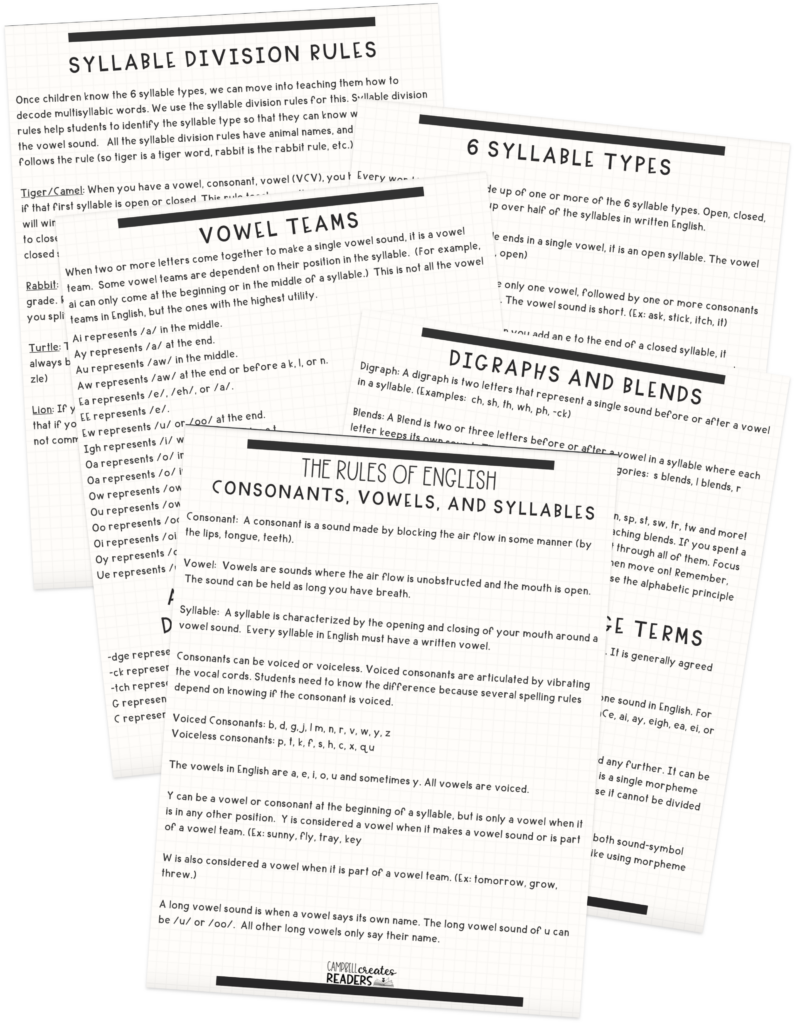
Share This:
When I was in the classroom, I eagerly anticipated the days when we would return to school and I’d get my schedule and my roster. I would relish taking the master schedule, figuring out how much time I had to teach reading, and then divvying up that reading blocking time into reading, writing, read-aloud, whole group and small group.
Today, I want to help you do the same. No matter the grade-level or the amount of time you have, I hope I can alleviate some of the stress of trying to make it all work. I’m going to offer suggestions for your reading block, but keep in mind these are just suggestions. You can alter and tweak to support what works for you and your students.
You want to fit it all in. I get that. But the truth is, when you have to teach whole group, small group, reading, writing, grammar, etc., and you are only given 60 minutes to do it-something will be left out. This is not a reflection of you as a teacher, but instead a systemic issue. Give yourself grace. You cannot do in 60 minutes what you’d be able to do in 120 minutes.
Even if you have the most perfectly designed literacy block with two hours, time will still be an issue. Some days your phonics lesson might take 30 minutes, and you’ll find you have less time for whole-group comprehension. Other days you might go longer on your comprehension lesson and have only a few minutes for writing. As long as you are getting through the curriculum, we’ve got to be able to have some wiggle room when it comes to time.

60 minutes is a near impossibility for including all of the necessary components. If this were the only allotted time, I would strongly recommend fighting for additional time. There are too many key components to fit into that amount of time.
This is your explicit phonics instruction time. During this time, you will introduce and practice new rules, dictation, and review reading. Any writing during this time is not considered a part of the writing block, but a part of the phonics lesson.
Until later in 2nd grade, whole-group comprehension will most likely be conducted through read-alouds. Comprehension must be taught from the start. Keep in mind that children can process read-alouds that are on a much higher level than what they can read for themselves. So even when children can read themselves, you can incorporate read-alouds at a more sophisticated level then what they can do on their own.
Gone is the hour-long writer’s workshop where we asked first graders to write independently for 30 minutes (I really wish I were joking. Although sometimes my firsties went for 45 minutes. I’m still not sure what they were doing that entire time).
The notion of writer’s workshop was essentially “if we give them enough time to write, they will become writers.” The workshop was really focused on writing on a wholistic level. Instead of teaching and practicing specific skills like writing compound sentences, children were encouraged to write entire narratives.
Now, I realize that teaching writing* needs to be as explicit as teaching reading. We teach children the building blocks of writing so that they can eventually write those longer papers–we can’t expect them to write beautifully crafted essays without taking the time to teach them how the sentences work that are making up those paragraphs!
I was taught that our “mini-lesson” needed to be between 5 and 15 minutes so that we could get to the most important part of the day: small group instruction. Balanced literacy minimized the whole-group lesson to maximize small group instruction.
But we must remember than when we have a group with us at the table, the majority of our students are working independently without us. We must find the balance of ample amount of teacher-led instruction in whole-group with skill-focused instruction in small group.
With 30 minutes, you can meet with 2 (possibly 3) small groups a day. You do not need to (and simply cannot) meet with every child every day. Work with your most struggling readers daily, then rotate the remaining groups throughout the week.
120 minutes is the ideal amount of time for language arts, although I’d love if you could have a few extra minutes in another part of the day for a read-aloud for the pure enjoyment of reading. With 120 minutes, the day can be broken apart as follows:
All the components from the 90 minute block stay the same, but there is additional time for each block.
The biggest change in the 3-5 schedule is that less time is devoted to word recognition, and more time is devoted to comprehension instruction.

Even for the upper grades, 60 minutes of daily ELA instruction simply isn’t enough time. I know that departmentalization has made it more difficult to have longer blocks of uninterrupted instructional time, but it is important. We cannot fit in morphology, vocabulary, comprehension, writing, and small group within 60 minutes. If someone thinks it can happen, I’d love to see what they’ve got!
I’ve included morphology and vocabulary together, although vocabulary is really an integral part of comprehension. But I have to be a realist. On days where we want to go deep with vocabulary activities from the text, we may need to borrow from another time in the day. Borrowing from morphology time for the day is a great place to sneak in extra time.
Morphology instruction has become a huge part of my instruction. Once children can read single-syllable words, morphology allows us to expand their vocabulary, even when they are not with us. For example, once I teach a child that the root “struct” means to build, they will (hopefully) be able come across a word with that same root and generate an understanding of what words like deconstruct, constructive, and restructure mean.
For the older kids, whole-group comprehension can be a mix of teacher-read materials and student-read materials. Read-alouds don’t have to stop after second grade. Reading aloud books and passages can give children at any grade level access to more sophisticated texts than what they could read on their own.
I’ll be honest–I don’t like 20 minutes for writing in the upper grades. I really think we need about 30 minutes for enough time for us to instruct and for the kids to practice. But we have to be realists. And realistically, there’s nowhere else in the reading block that I would steal from. Keep in mind that some independent writing can be done during small group time as a center.
I do have a few ideas for some solutions, however. These are not everyday solutions, but ones you could use occasionally when you just require more time On days when you need the kiddos to write some more or get additional practice, steal 15 minutes from small group. That would leave you with only enough time for 1 small group, but you could meet with your most struggling readers.
Another idea would be to steal time from your comprehension block occasionally. Especially if you can tie the writing into the comprehension work you are doing, that is a perfectly acceptable way to get enough time.
Just like with K-2, we don’t need an hour of small group every day. We want kiddos to spend the majority of their day with the teacher (whether directly or where the teacher can give immediate feedback), not working independently without feedback. Work with your most struggling readers during this time, then alternate the other groups.
- 20 Minutes: Morphology/Vocabulary
- 30 Minutes: Whole-Group Comprehension
- 30 Minutes: Writing
- 40 Minutes: Small Group
There is not a perfect schedule. What I’ve given you today are mere suggestions based on what I would do with the knowledge I have. You will undoubtedly shift a few things based on the available time you have, but use these numbers as a guiding principle for your planning.
If I had written this blog post even 5 years ago, whole-group would be minimized for the sake of small group. Shortening the amount of small group instruction was a game changer. It meant I went from focusing on direct instruction on everyone’s “level” to ensuring that I sufficiently scaffolded core curriculum so that children don’t need such different instruction in the first place. If we can put our emphasis on getting core right, then the discrepancies will not be nearly as large.
Share This:

Savannah Campbell is a K-5 reading specialist. She has taught her entire 12-year teaching career at the school she went to as a child. She holds two master’s degrees in education from the College of William and Mary. Savannah is both Orton-Gillingham and LETRS trained. Her greatest hope in life is to allow all children to live the life they want by helping them to become literate individuals.

Savannah Campbell is a K-5 reading specialist. She has taught her entire 12-year teaching career at the school she went to as a child. She holds two master’s degrees in education from the College of William and Mary. Savannah is both Orton-Gillingham and LETRS trained. Her greatest hope in life is to allow all children to live the life they want by helping them to become literate individuals.
Feeling overwhelmed with all the terminology out there? Want to know the key terms all teachers need to teach phonics? In this FREE Rules of English cheat sheet, you get a 5 page pdf that takes you through the most important terms for understanding English—you’ll learn about digraphs, blends, syllable types, syllable divisions, and move. Grab today and take the stress out of your phonics prep!
